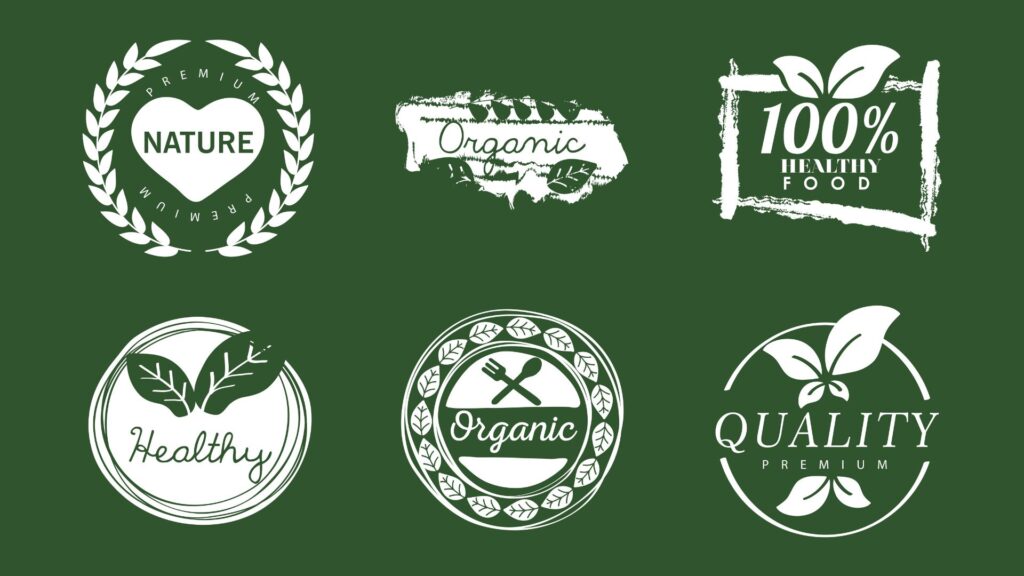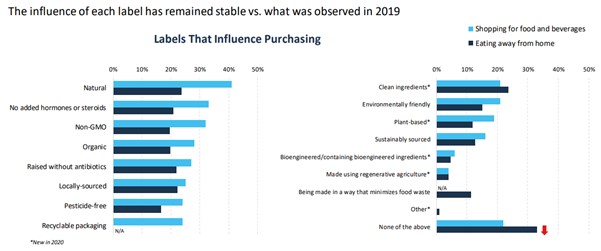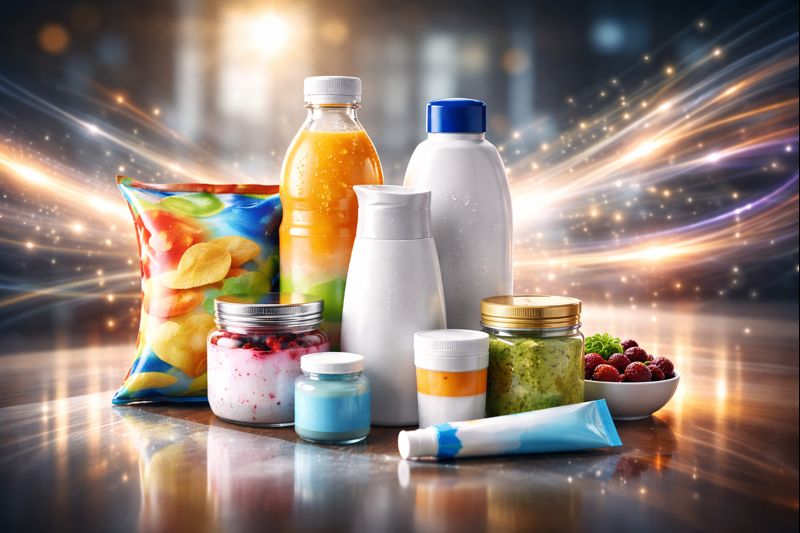Are You Aware of What’s in Your Daily Products?
Have you ever looked at a product label and wondered what all those ingredients mean? If so, you’re not alone. The clean label movement is rapidly gaining traction, transforming how we think about food and consumer health products. With more people prioritizing their health and well-being, transparency in product labeling has never been more crucial. But what does “clean label” mean, and why is it becoming such a buzzword in the consumer-packaged goods (CPG) industry?
This blog will explore the clean label trend and its profound impact on consumer health, examining how it reshapes consumer choices and builds trust. We’ll also highlight some standout clean-label products making waves in the market. Join us as we uncover the significant influence of this movement on the future of consumer health.
What is Clean Label?
At its core, clean labeling responds to consumer demand for transparency. It’s a consumer-driven approach that emphasizes using natural ingredients—those you can recognize and trust—while minimizing artificial substances. This means clearer, more understandable product information, allowing you to make informed choices about what you’re bringing home.
Key Clean Label Trends
- Clarity in Labelling: Consumers want transparent ingredient lists with familiar names that are easy to understand.
- Environmental Stewardship: Many brands prioritize sustainable sourcing and packaging practices that are kind to the planet.
- Allergen-Free and Clear: Formulas that are free from common allergens, with no hidden “may contain” statements, ensure safety, and build trust.
- Wholesome Choices: Health-conscious products emphasizing wellness and well-being are gaining popularity.
- Transparency in Nutrition: Accurate nutritional information empowers consumers to make informed decisions.

The Origins of the Clean Label Movement
The clean label movement emerged from a series of incidents that raised consumer concerns about the authenticity and safety of food products. It began to take shape around 2007 when a chemical linked to animal deaths was found in pet food, and toy recalls it exposed children to lead. The following year, tainted infant formula from China heightened worries about global food safety. The crisis deepened in 2013 when horse meat was discovered in hamburgers sold in European supermarkets and fast-food chains. These incidents sparked a growing demand for transparency and trust in the food industry, ultimately leading to the clean label movement.
Today, consumers prioritize health and wellness more than ever. 78% of U.S. consumers need to recognize the ingredients used in their products. However, other factors influence consumers’ understanding of clean labels, such as specific health claims, brand reputation, and the region of origin.
Why Clean Labelling Matters in the CPG Industry
The clean label trend for CPG brands is more than just reformulating products to remove artificial or questionable ingredients. It’s a comprehensive approach that enhances product formulations and prioritizes product label transparency. This allows consumers to understand the quality and simplicity of the ingredients used in their products.
The importance of clean labeling also includes the following: Consumer Empowerment: Clean labeling gives you, the consumer, control over your purchasing decisions by providing clear information about product ingredients. This empowerment allows you to confidently choose products that align with your health, dietary, and ethical needs, avoiding harmful substances like artificial sweeteners and trans fats.
- Informed Choices: Consumers can make informed choices based on their health, dietary, and ethical needs, avoiding harmful substances like artificial sweeteners and trans fats.Health Risk Reduction: Avoiding these toxic ingredients can lower your risk of developing health issues, providing safety and security in your product choices.
According to International Food Information Council (IFIC) research, 63% of consumers consider the ingredient list a crucial factor when purchasing. Moreover, 35% actively seek out products with straightforward ingredient lists. A staggering 70% of consumers are eager to learn more about the ingredients in their favorite products, highlighting the importance of transparency in building consumer trust.
Building Trust Through Transparency
Clean labels establish a foundation of trust between consumers and manufacturers by showcasing their commitment to their health and well-being. By providing transparent ingredient information, companies demonstrate their dedication to accurate and reliable labeling, fostering a deeper connection and loyalty from consumers. This transparency also encourages manufacturers to prioritize using safe and high-quality ingredients, driving positive changes within the industry.
The following statistics show the impact of clean labeling on purchase behavior. The “natural” label holds significant sway when consumers make purchasing decisions, whether in-store or in-restaurant, as they seek to make informed choices about their food and beverages.
Major Brands Leading the Change
Several leading food manufacturers have committed to removing artificial ingredients in response to growing consumer demand for transparency and healthier options.
Kraft, Nestlé, Panera, and others have eliminated artificial preservatives, colors, flavors, and dyes from iconic offerings, signaling a shift towards cleaner, more natural ingredients across the food industry. This move reflects a broader trend where companies like Whole Foods Market and Campbell’s have set a precedent by banning or pledging to phase out artificial additives entirely. The adoption of such practices not only aligns with evolving consumer preferences but also strengthens brand equity by promoting trust and authenticity. As businesses prioritize ingredient transparency, those who innovate in natural product formulations are poised to lead the industry in market relevance and customer loyalty.
Challenges in Adopting Clean Labelling
While the clean label movement is powerful, it comes with its own set of challenges. Manufacturers must carefully consider the functionality of natural ingredients. While some natural ingredients can offer antimicrobial properties, their efficacy must be thoroughly tested to ensure food safety and quality.
Natural ingredients can also impact sensory attributes, such as flavor and appearance. For instance, using spices as preservatives may introduce unique flavors consumers might find appealing or off-putting. Moreover, clean labeling involves more than removing ingredients; manufacturers must understand how ingredients work together to achieve desired results.
Additionally, manufacturers face challenges related to costs and regulations, including labeling requirements, usage limits, and Generally Recognized as Safe (GRAS) regulations. By navigating these complexities, manufacturers can better meet consumers’ evolving preferences for natural and transparent ingredients.
Conclusion
The clean label movement is a powerful force reshaping how consumers think about the products they buy. By focusing on transparency and utilizing natural ingredients, manufacturers can foster trust and develop a strong reputation for their dedication to health and well-being. As consumers increasingly demand control over their purchasing decisions, the importance of clear and concise ingredient labels cannot be overstated.
This trend is not just a fad; it represents a fundamental shift in how consumers approach their health and wellness. By adopting the clean label movement, manufacturers can foster positive industry change while gaining a competitive edge that distinguishes them from others. As statistics show, consumers are eager to learn more about the ingredients in their favorite products and are willing to make informed choices based on transparent labeling.
It’s time for manufacturers to take note and prioritize the clean label movement, empowering consumers to make decisions that align with their values and priorities. Together, we can shape a healthier future, one informed choice at a time.
Talk to One of Our Experts
Get in touch today to find out about how Evalueserve can help you improve your processes, making you better, faster and more efficient.



